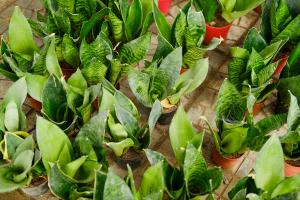How to Take Care of a Bonsai Tree Plant
Bonsai trees are beautiful and delicate plants that require special care and attention to thrive. These miniature trees require a specific amount of light, water, and nutrients to grow and maintain their health. If you’re a beginner in bonsai tree care, here are some essential tips on how to take care of a bonsai tree plant.
1. Choosing the Right Type of Bonsai Tree
Before you start taking care of a bonsai tree, it’s important to choose the right type of tree that suits your environment and lifestyle. Some bonsai trees need more sunlight than others, while others require less water or specific types of soil. Research the different types of bonsai trees available and determine which one is best suited for your home or workspace.
2. Watering Your Bonsai Tree
Bonsai trees need to be watered regularly to keep their soil moist. However, it’s important not to overwater or underwater the tree, as both can be harmful to its health. The frequency and amount of water you give your bonsai tree will depend on factors such as the type of tree, the size of the pot, and the environmental conditions. Water your bonsai tree once a day or when the soil feels dry to the touch.
3. Providing Adequate Lighting
Bonsai trees need a good amount of sunlight to thrive. However, too much direct sunlight can damage your tree’s leaves and bark. Direct sunlight in the morning or afternoon is beneficial, but it’s important to provide some shade during the hottest times of the day. Place your bonsai tree in a location where it can receive adequate lighting without being exposed to direct sunlight for prolonged periods.
4. Choosing the Right Pot and Soil
The kind of soil and pot you use for your bonsai tree can have a significant impact on its health and growth. Bonsai trees need to have a well-drained soil that provides proper aeration and drainage. Additionally, the size and depth of the pot should be appropriate for the size of the tree, as an oversized or undersized pot can restrict root growth and cause stress to your bonsai tree.
5. Fertilizing Your Bonsai Tree
Fertilizing your bonsai tree is essential to providing it with the necessary nutrients to grow and thrive. Choose a high-quality fertilizer that’s formulated specifically for bonsai trees and follow the instructions for usage carefully. Typically, bonsai trees need to be fertilized during the growing season, which usually starts in spring and ends in late summer or early fall.
6. Pruning and Shaping Your Bonsai Tree
Pruning and shaping your bonsai tree is a crucial part of its care, as it helps to maintain its shape and size. Regular pruning also promotes new growth and improves the overall health of the tree. When pruning your bonsai tree, use sharp and clean scissors or pruning shears, and remove the dead or unwanted branches and leaves. Additionally, shaping your bonsai tree helps to give it a unique character and beauty.
Conclusion
Taking care of a bonsai tree plant can be challenging but rewarding. By providing your miniature tree with the right amount of water, fertilizers, lighting, and pruning, you can ensure that it remains healthy, happy, and beautiful for years to come. Remember to research the specific needs of your tree and adapt your care routine accordingly to promote its growth and longevity. With patience, practice, and dedication, anyone can master the art of taking care of a bonsai tree plant.

 how many times do yo...
how many times do yo... how many planted tre...
how many planted tre... how many pine trees ...
how many pine trees ... how many pecan trees...
how many pecan trees... how many plants comp...
how many plants comp... how many plants can ...
how many plants can ... how many plants and ...
how many plants and ... how many pepper plan...
how many pepper plan...































